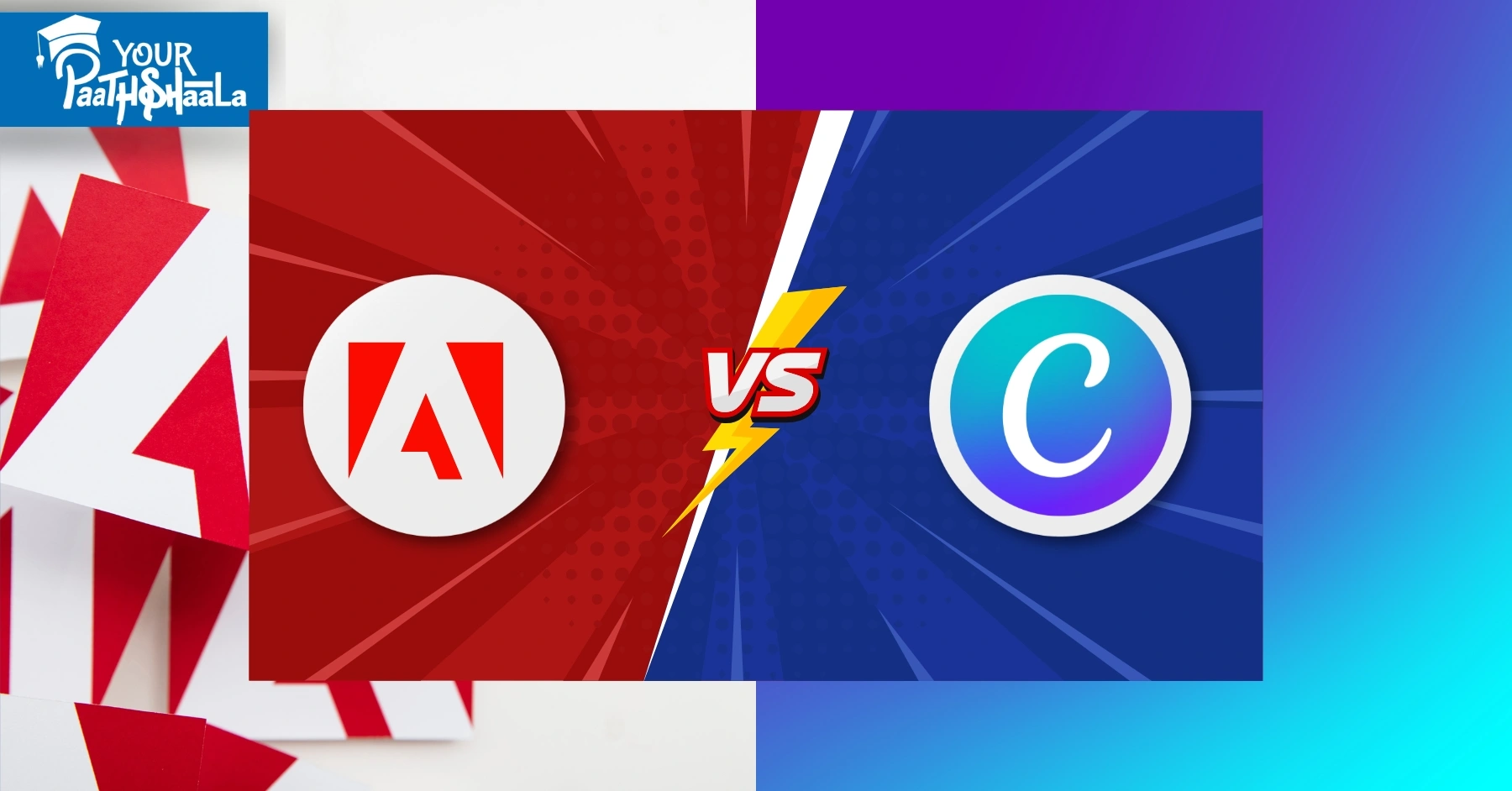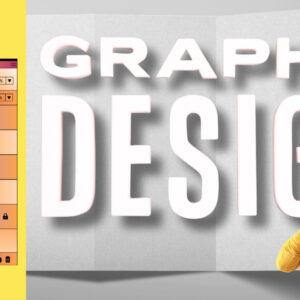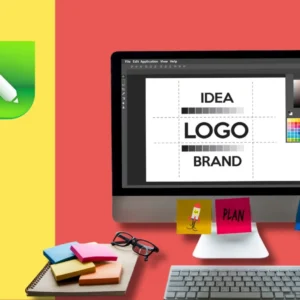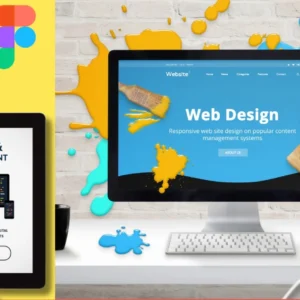
Choosing the right design platform in 2025 can make or break your creative workflow. Canva and Adobe Creative Suite are two giants in graphic design, but they cater to different needs. Canva’s drag-and-drop simplicity is perfect for beginners, while Adobe’s professional-grade tools like Photoshop and Illustrator dominate for advanced designers. With Canva’s growing AI features and Adobe’s Creative Cloud innovations, which is worth your money? This beginner-friendly guide dives into Canva vs Adobe Creative Suite 2025, comparing features, pricing, ease of use, and more to help you decide. Whether you’re a small business owner or a pro designer, let’s find your perfect fit!
What Are Canva and Adobe Creative Suite?
Canva: Launched in 2013, Canva is a cloud-based design platform known for its intuitive drag-and-drop interface. It offers over 250,000 free templates, AI tools like Magic Studio, and a vast library of stock photos, making it ideal for quick designs like social media posts, flyers, and logos.
Adobe Creative Suite: Adobe Creative Cloud (CC) is a suite of nearly 30 professional-grade apps, including Photoshop (photo editing), Illustrator (vector graphics), InDesign (layouts), and Adobe Express (a Canva-like tool). It’s the industry standard for designers, offering unmatched control and advanced features.
This guide compares Canva vs Adobe Creative Suite 2025 to see which suits your budget and goals.
Why Canva vs Adobe Creative Suite 2025 Matters
Choosing between Canva and Adobe Creative Suite in 2025 depends on your skill level, budget, and project needs. Here’s why this comparison is crucial:
- Ease of Use: Canva is beginner-friendly; Adobe has a steep learning curve but offers more power.
- Cost: Canva’s free tier and affordable plans suit tight budgets, while Adobe’s subscriptions are pricier.
- Features: Canva excels in quick designs; Adobe offers advanced editing for professional work.
- Target Audience: Canva is great for non-designers; Adobe is built for pros.
- Trends in 2025: Both platforms are advancing with AI, but which delivers better value?
This comparison will help you invest in the right tool for your creative projects.
Canva vs Adobe Creative Suite 2025: Key Comparisons
Let’s break down Canva vs Adobe Creative Suite 2025 across five key areas: ease of use, features, pricing, collaboration, and output quality.
1. Ease of Use: Beginner-Friendly vs Professional-Grade
Canva
- Interface: Drag-and-drop simplicity with a clean, intuitive layout. Beginners can create designs in minutes without prior experience.
- Learning Curve: Minimal—most users master it in hours. Templates and tutorials make it accessible.
- Best For: Non-designers, small businesses, and marketers needing quick graphics.
- Drawback: Limited control for complex edits like hand-drawn vectors.
Adobe Creative Suite
- Interface: Varies by app. Adobe Express is beginner-friendly, similar to Canva, but Photoshop, Illustrator, and InDesign are complex with extensive toolsets.
- Learning Curve: Steep, especially for Photoshop and Illustrator. Adobe Express has a quicker learning curve, but other apps require weeks to master.
- Best For: Professional designers, photographers, and video editors needing advanced tools.
- Drawback: Overwhelming for beginners without design experience.
Verdict: Canva wins for ease of use, perfect for beginners. Adobe suits pros or those willing to learn complex tools.
2. Features: Templates vs Advanced Editing
Canva
- Templates: Over 250,000 free templates and 400,000+ with Pro for social media, flyers, and more.
- AI Tools: Magic Studio includes AI image generation, background removal, and text-to-design features.
- Editing: Basic photo editing, cropping, and filters. Lacks advanced tools like layer masking or vector drawing.
- Extras: Brand Hub for consistent branding, real-time collaboration, and integrations with Google Drive and social platforms.
Adobe Creative Suite
- Templates: Adobe Express offers 220,000+ templates, but Photoshop and Illustrator rely on user-sourced assets or Adobe Stock (250 million assets).
- AI Tools: Adobe Firefly (in Express) offers text-to-image, generative fill, and text effects. Sensei AI enhances editing in Photoshop and Lightroom.
- Editing: Unmatched power—Photoshop for pixel-perfect edits, Illustrator for vectors, InDesign for layouts, and Premiere Pro for video.
- Extras: Seamless app integration, 30,000+ Adobe Fonts, and cloud libraries for asset sharing.
Verdict: Adobe wins for advanced features and flexibility; Canva excels for quick, template-based designs.
3. Pricing: Budget-Friendly vs Premium Investment
Canva
- Free Plan: Robust with thousands of templates, basic editing, and limited AI tools.
- Pro Plan: $12.99/month or $119.99/year (~$9.99/month) for premium templates, AI features, and Brand Hub.
- Teams Plan: $7.99/user/month for collaboration (minimum 2 users).
- Value: Affordable for beginners and small businesses. Recent price hike concerns reversed after user backlash.
Adobe Creative Suite
- Free Plan: Limited to Adobe Express with basic features and fewer templates.
- Adobe Express Premium: $9.99/month for AI tools and premium assets.
- Creative Cloud All Apps: $59.99-$89.99/month for 20+ apps, including Photoshop, Illustrator, and InDesign. Single apps (e.g., Illustrator) at $31.99/month.
- Value: Expensive but includes industry-standard tools. Free Express plan is less robust than Canva’s.
Verdict: Canva wins for affordability and free tier functionality. Adobe is pricier but offers more for professionals.
4. Collaboration: Team Workflows and Integration
Canva
- Features: Real-time editing, shared workspaces, and Brand Hub for centralized logos, fonts, and colors. Comments and approvals streamline team workflows.
- Integrations: Connects with Google Drive, Dropbox, and social media for easy sharing.
- Best For: Small teams and non-designers collaborating on quick projects.
Adobe Creative Suite
- Features: Cloud libraries sync assets across apps (e.g., Photoshop to Illustrator). Adobe Express supports team templates, but full Creative Cloud excels for large design teams.
- Integrations: Deep integration with Adobe apps, Slack, Microsoft Teams, and CRMs.
- Best For: Professional teams needing seamless asset sharing and complex workflows.
Verdict: Adobe wins for professional team integration; Canva is better for small, non-designer teams.
5. Output Quality: Professional Polish vs Quick Results
Canva
- Quality: High-quality outputs for digital (PNG, JPG, MP4) and print (PDF, SVG with Pro). Great for social media and basic print.
- Limitations: Lacks precision for complex vector art or high-end print layouts.
- Accessibility: Better for accessible PDFs than Adobe Express, but limited compared to InDesign.
Adobe Creative Suite
- Quality: Industry-standard outputs with pixel-perfect precision (Photoshop), scalable vectors (Illustrator), and professional layouts (InDesign). Supports CMYK for print.
- Limitations: Adobe Express outputs are simpler, similar to Canva, but full suite excels for pro-grade work.
- Accessibility: Express improves PDF accessibility, but full suite requires expertise.
Verdict: Adobe wins for professional-grade output; Canva is sufficient for quick, digital-first designs.
Canva vs Adobe Creative Suite 2025: Which Should You Choose?
Choose Canva If:
- You’re a beginner, small business owner, or marketer needing quick, professional designs.
- Budget is a concern—Canva’s free tier and $12.99/month Pro plan are affordable.
- You want templates and AI tools for social media, flyers, or presentations.
- Your team needs simple collaboration without a steep learning curve.
Example Use Case: A small bakery creating Instagram posts and flyers with Canva’s templates and Magic Studio AI.
Choose Adobe Creative Suite If:
- You’re a professional designer, photographer, or video editor needing advanced tools.
- You require precise control for vector art, photo editing, or print layouts.
- Your team uses multiple Adobe apps and needs seamless integration.
- Budget allows for $59.99+/month for Creative Cloud or $9.99/month for Express.
Example Use Case: A design agency creating a brand campaign with Illustrator, Photoshop, and InDesign.
Step-by-Step Tutorial: Create a Social Media Post
Here’s a quick comparison of creating an Instagram post in Canva vs Adobe Creative Suite (using Adobe Express).
Canva Workflow
- Open Canva: Sign in at canva.com (free or Pro).
- Choose Template: Select “Instagram Post” and pick a template from 250,000+ options.
- Customize: Use Magic Studio to generate an AI image (e.g., “vintage coffee shop vibe”) or upload your own. Add text with fonts like Montserrat.
- Edit: Adjust colors, add a logo via Brand Hub, and apply animations.
- Export: Save as PNG or MP4 in ~10 minutes.
Adobe Express Workflow
- Open Express: Sign in at adobe.com/express (free or $9.99/month).
- Choose Template: Select from 220,000+ templates for Instagram.
- Customize: Use Firefly AI for text-to-image or generative fill. Add text with Adobe Fonts (30,000+ options).
- Edit: Reorder layers easily (visible in top-right) and add animations.
- Export: Save as PNG or MP4 in ~12 minutes.
Verdict: Canva is faster for beginners; Adobe Express offers cleaner layer control for pros.
Common Mistakes to Avoid
- Canva: Relying only on templates—customize to avoid generic designs.
- Adobe: Starting with Photoshop or Illustrator without tutorials—begin with Express for simplicity.
- Both: Ignoring brand consistency—use Brand Hub (Canva) or cloud libraries (Adobe) for cohesive designs.
- Accessibility: Forgetting to check PDF accessibility, especially for Canva outputs.
Learning More About Canva and Adobe Creative Suite
- Canva: Check Canva’s Design School or YouTube channels like The Futur for tutorials.
- Adobe: Explore Adobe’s Learn hub or Video Copilot for Photoshop/Illustrator guides.
- Communities: Join Reddit’s r/GraphicDesign or X for user tips. One X user recommends Adobe Illustrator for industry roles but praises Canva for learning design basics.
- Practice: Create one design weekly to master either platform.
Why Canva vs Adobe Creative Suite 2025 Is a Hot Topic
In 2025, Canva’s acquisition of Leonardo.Ai and partnership with Getty Images (350 million assets) strengthen its AI and stock library, rivaling Adobe Firefly and Adobe Stock. Adobe’s Creative Cloud remains the industry standard, with 4.7/5 ratings from 7,386 reviews for its comprehensive tools, though some users criticize its cost. Canva’s 4.7/5 from 12,877 reviews highlights its accessibility and affordability. Both platforms are evolving, making this comparison critical for creators.
Conclusion
Canva vs Adobe Creative Suite 2025 boils down to your needs and budget. Canva is the go-to for beginners, small businesses, and quick designs, offering a robust free tier and affordable Pro plan. Adobe Creative Suite, with apps like Photoshop, Illustrator, and Adobe Express, is ideal for professionals needing advanced editing and integration. If you’re starting out or on a budget, Canva’s simplicity wins. For pro-grade work, Adobe’s power is unmatched. Try Canva’s free plan or Adobe Express to see which fits your workflow! To learn more about graphic designing practically join our institute YourPaathshaala in raipur or contact us at 8305209520 for more information.








Add a Comment